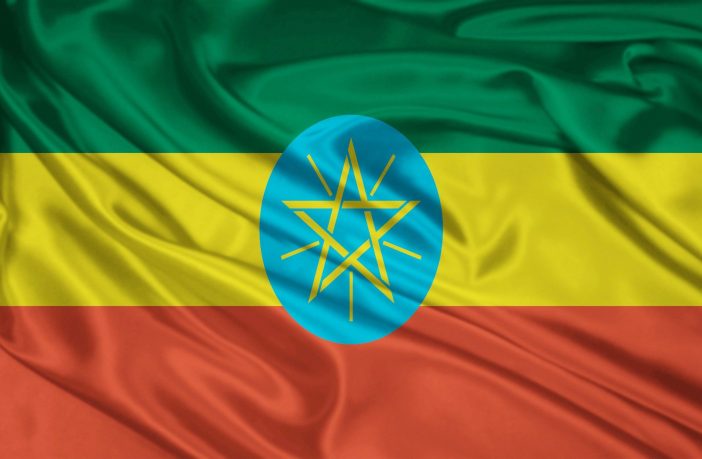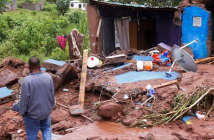Country profile
Ethiopia has an estimated population of 109 million. The Ethiopian government has been luring foreign investors and improving infrastructure at home, and it has achieved rapid economic growth these years. Ethiopia’s GDP was growing at a year-on-year rate of at least 10% from 2004 to 2015, but the growth has subsided in recent years. While Ethiopia maintained a GDP growth rate of 6.8% in 2018, its 2019 economic outlook may take a turn for the worse due to a military coup.
Ethiopia is an arid country with tropical, subtropical, and polar climates. The average temperature in Ethiopia is 27 °C in summer, spanning from June to August, and 16 °C in winter, lasting from December to February.
Ethiopia receives a daily solar radiation of 4–5 kWh/m2.
Renewable energy developments in Ethiopia
Ethiopia develops renewable energy under the Growth and Transformation Plan (GTP) II, which was launched in 2016. GTP II sets a target of installing 17.208 MW of generation capacity between 2019 and 2020, sourcing up to 13,817 MW from water, 1,224 MW from wind, and 300 MW from solar PV.
The development of the Ethiopian energy sector focuses largely on hydropower because plenty of reservoirs were erected nationwide in the past. Wind power is also on Ethiopia’s energy development agenda, but it has a significantly weaker presence in the energy mix than hydropower. In 2017, wind power accounted for 7.6% of installed renewables capacity, whereas hydropower constitutes over 90% of the total. Compared to hydropower and wind power, other renewable energy technologies develop at a slower pace in Ethiopia.
Plagued by drought, Ethiopia witnessed hydropower, the centrepiece of its energy sector, falling short of the nation’s electricity consumption. There are some cases when power brownouts and electricity rationing prevailed nationwide.
Ethiopia’s PV policy and development
Since Ethiopia’s renewable energy policy development framework had long been prioritizing hydropower and wind power, the PV industry had stagnated, with little improvement in demand for PV systems. But things have looked up for the PV sector since the roll-out of GTP II, under which the government pledges to have 300 MW of PV installed between 2016 and 2020. Moreover, Ethiopia joined the International Finance Corporation’s (IFC) Scaling Solar program, which will help Ethiopia develop 200-700 MW of PV capacity under the initiative.
GTP II and Scaling Solar are drivers behind Ethiopia’s PV development. Under GTP II, Ethiopia had awarded projects through a 100-MW PV tender in 2017 and contracted developers in 2018 to undertake a 100 MW independent power producer (IPP) project. However, these projects are yet to get off the ground. Considering the renewables target set by the scheme, Ethiopia still has 100 MW to be deployed; so, a tender for another project of this scale may be issued in the future.
Under Scaling Solar, two tenders have been issued by Ethiopia for 750 MW of solar capacity; both of which are still requesting for proposal. Meanwhile, Ethiopia’s Ministry of Finance and Economic Development took the initiative to tender a 798 MW IPP project, which is now calling for proposal. This project is probably meant to be an extension of the IFC-financed Scaling Solar scheme.
A military coup has recently disrupted the entire Internet network in Ethiopia, putting the nation on high alert. The ongoing political crisis might have brought all PV tenders and the construction of PV plants across the country to a halt, and thus there is a slim possibility for domestic module demand to improve in 2019.
Ethiopia–China trade: module import and export
From 2017 to the first half of 2019, Ethiopia imported 11 MW of modules from China. But this figure has not showed much increase since 200 MW of PV projects were awarded through auction between 2017 and 2018. The construction of these projects has stalled and may make no progress this year. It remains to be seen whether Ethiopia will import more modules next year for the projects.
Conclusion
Although Ethiopia used to identify hydropower and wind power as the key to satisfy the country’s energy demand, leaving behind solar PV power, the domestic PV market has been picking up these years on the strength of the government’s continued promotion and the IFC’s support.
Ethiopia has concluded a PV auction and signed an IPP contract, but considering the ongoing putsch and the low module imports that are prevailing across the country, whether PV projects awarded from the auction and covered under the contract will get going and even completed next year depends on how the local political landscape evolves.
This report was first published by PVInfolink and is republished with permission.















